Opinion
Sunnybrook has been paying property taxes for 56 years. Was it good value?

It is easy to travel around Red Deer and see examples of idealism meeting practicality and realism.
Unfinished roads going to non-existent bridges. Neighbourhoods like Timberlands, with a firehall and a high school and way too many undeveloped lots.
Capstone is a decades old work in progress that keeps hitting the taxpayers. In the beginning it was simple, move the dilapidated public works building out of downtown and turn the riverfront property into high end river view properties.
A wonderful vision but reality stepped in. The new public works, went with the high-end vision and the costs soared to north of a hundred million dollars and kept going. Re-aligning the roads took another 50 million, upgrading services, burying lines cost more.
After decades and about $200 million dollars we have 23 acres of empty vision. There is still talk of a $20+ million pedestrian bridge just metres away from Taylor Drive bridge. The costs for this unfinished vision is hitting $10 million an acre.
Enough with the eternal yet to be built projects, as more examples like the Dawe Arena twinning, north of 11A , 50m pool, Hazlett Lake, and the list keeps going.
Let us talk about the city’s tendency to build and abandon philosophy. The neighbourhoods that they cannot maintain.
Our Premier keeps talking or ranting about equalization payments, How Alberta has paid more to Ottawa than they have received back.
Our neighbourhoods can say similar sentiments when it comes to city hall. My neighbourhood, Sunnybrook is 55 years old. Our roads and sidewalks are 55 years old. We have been paying property taxes for 55 years. Did we get 55 years of property taxes back in return?
My 55 year old sidewalk got half of one crack repaired this year. The second time in the 20 plus years that I have lived on this street. I have shrubs growing in my sidewalk, I have pulled saplings out of the street in front of my house. My sidewalk has sunk to becoming a pool or an ice rink depending upon the weather.

The city said it cannot afford to maintain the 800 kms of sidewalks it now has. The population is static, population increase of 195 in 5 years, but we built 1299 new homes with sidewalks at the same time. If the crack is not at least 25mm (1”) wide and poses a tripping hazard it will not be repaired.
The city subsidizes the downtown with our taxes. They feel the downtown is a vital attraction for Red Deer. Sunnybrook was once named in MacLeans magazine as the Number 1 neighbourhood in Canada. Did the city capitalize on this national news item? No, it widened 32 Street and 40 Avenue and isolated and abandoned Sunnybrook.
The Bower Mall was built with the understanding that the Molly Banister drive would be extended to give direct access to Sunnybrook, Anders, Morrisroe, Inglewood, Vanier, Mountview, Deer Park etc. The Bower subdivision was built isolated from Molly Banister Drive by this commercial development.
The city wants to abandon that commitment.

Ideally, in another dimension, the Piper Creek would be this bubbling brook enjoyed by abundant wildlife and environmentally conscious Red Deer residents. Reality sets in.
The polluted, weed infested, algae prone creek by Bower Mall after flowing through 2 landfills, dead falls, blow downs, and a cow pasture, is isolated from the trail that comes out of the woods by Molly Banister Drive. The trail continues south in the grasses parallel with Barrett Drive on the west side.
The east side of the creek will have the old barb wired game proof fence that borders it, be replaced by the rear residential fences of 50 new homes, if the road allowance is removed.
Negating the bridge, eliminating the customer traffic, slowing emergency vehicles, forcing thousands of drivers daily to drive 4 extra kilometres in a city that CBC once reported had the poorest air quality in Canada. (September 9, 2015).
The city talks about a Garden of Eden, this wonderful wildlife corridor, where animals can roam except reality plays a hand. Traffic is a wall less barrier. 10,000 cars per day is the tipping point for wildlife. 32 Street is currently at 23,500 cars per day with expectations of 40,000 per day when it is widened to 6 lanes when Molly Bannister is not extended. 19 Street is expected to be widened to 6 lanes and traffic is expected to soar to even higher numbers.
The thing about 19 Street is that it too crosses the creek in this fantasy wild life corridor, on the south side of Molly Banister. There is no bridge, no tunnel, no safe way for animals to cross. There is talk about a pedestrian bridge for residents to cross. There is talk about a traffic circle for cars to have easier access to 19 Street. Where are the city councillors demands to protect the oft-mentioned wildlife corridor?
The proposed bridge for Molly Banister will take up an acre of land and the road will run along the creek similar to Barrett Drive in Bower and Selkirk Boulevard in Sunnybrook then run parallel with the power lines similar to 22 Street. The alternative being proposed is 50 houses along the creek taking up 16 +/- acres then a road to the power lines. Which is honestly better for wildlife?
The north connector encroaches on wildlife way beyond the Molly Banister Ext. yet silence from city councillors.
Realism plays a dirty hand at times, and the city seems to ignore this and you only need to look at future expenses the city incurred in their quests for unrealistic expectations. The million dollar annual payments for years to come for the winter games, the Exhibition Hall at the Westerner where councillors sat on the board, Capstone, Timberlands, North of 11A, Dawe arena, the unfinished bridge, the bus terminal’s green roof, and the list grows.
There are more options than (1)dream the impossible or (2) build and abandon? You could maintain what you have. Follow through on obligations and stop making rash decisions on immediate schemes.
There 300 families backing onto 32 Street that do not deserve to have their quality of life diminished. The same can be said of the families backing onto 19 St.
Thousands of families in neighbourhoods south of 39 St. do not deserve the traffic congestion forced onto their commute.
19 Street is becoming a valued asset to county businesses and Gasoline Alley will be easier to access than downtown. The downtown needs our help in more ways than subsidies.
I believed that the bigger the picture the more obvious the need for Molly Bannister to be extended. So did we get good value for our property taxes? Will the attacks on our quality of life end? Does equalization even exist? We will see.
Thank you.

Bruce Dowbiggin
The Game That Let Canadians Forgive The Liberals — Again

With the Americans winning the first game 3-1, a sense of panic crept over Canada as it headed to Game 2 in Boston. Losing a political battle with Trump was bad enough, but losing hockey bragging rights heading into a federal election was catastrophic for the Family Compact.
“It’s also more political than the (1972) Summit Series was, because Canada’s existence wasn’t on the line then, and it may be now. You’re damn right Canadians should boo the (U.S.) anthem.” Toronto Star columnist Bruce Arthur before Gm. 1 of USA/ Canada in The 4 Nations Cup.
The year 2025 is barely half over on Canada Day. There is much to go before we start assembling Best Of Lists for the year. But as Palestinian flags duel with the Maple Leaf for prominence on the 158th anniversary of Canada’s becoming a sovereign country it’s a fair guess that we will settle on Febuary 21 as the pivotal date of the year— and Canada’s destiny as well.
That was the date of Game 2 in the U.S./Canada rivalry at the Four Nations Tournament. Ostensibly created by the NHL to replace the moribund All Star format, the showdown of hockey nations in Boston became much more. Jolted by non-sports factors it became a pivotal moment in modern Canadian history.
Set against U.S. president Donald Trump’s bellicose talk of Canada as a U.S. state and the Mike Myers/ Mark Carney Elbows Up ad campaign, the gold-medal game evoked, for those of a certain age, memories of the famous 1972 Summit Series between Canada and the USSR. And somehow produced an unprecedented political reversal in Canadian elections.
As we wrote on Feb. 16 after Gm. 1 in Montreal, the Four Nations had been meant to be something far less incendiary. “Expecting a guys’ weekend like the concurrent NBA All Star game, the fraternal folks instead got a Pier Six brawl. It was the most stunning beginning to a game most could remember in 50 years. (Not least of all the rabid Canadian fanbase urging patriotism in the home of Quebec separation) Considering this Four Nations event was the NHL’s idea to replace the tame midseason All Star Game where players apologize for bumping into each other during a casual skate, the tumult as referees tried to start the game was shocking.
“Despite public calls for mutual respect, the sustained booing of the American national anthem and the Team Canada invocation by MMA legend Georges St. Pierre was answered by the Tkachuck brothers, Matthew and Brady, with a series of fights in the first nine seconds of the game. Three fights to be exact ,when former Canuck J.T. Miller squared up with Brandon Hagel. (All three U.S. players have either played on or now play for Canadian NHL teams.)
“Premeditated and nasty. To say nothing of the vicious mugging of Canada’s legend Sidney Crosby behind the U.S. net moments later by Charlie McEvoy.”
With the Americans winning the game 3-1 on Feb. 15, a sense of panic crept over Canada as it headed to Game 2 in Boston. Losing a political battle with Trump was bad enough, but losing hockey bragging rights heading into a federal election was catastrophic for the Family Compact. As we wrote in the aftermath, a slaughter was avoided.

“In the rematch for a title created just weeks before by the NHL the boys stuck to hockey. Anthem booing was restrained. Outside of an ill-advised appearance by Wayne Gretzky— now loathed for his Trump support— the emphasis was on skill. Playing largely without injured Matthew and Brady Tkachuk and McAvoy, the U.S. forced the game to OT where beleaguered goalie Craig Binnington held Canada in the game until Connor McDavid scored the game winner. “
The stunning turnaround in the series produced a similar turnaround in the Canadian federal election. Galvanized by Trump’s 51st State disrespect and exhilarated by the hockey team’s comeback, voters switched their votes in huge numbers to Carney, ignoring the abysmal record of the Liberals and their pathetic polling. From Pierre Poilievre having a 20-point lead in polls, hockey-besotted Canada flipped to award Carney a near-majority in the April 28 election.
The result stunned the Canadian political class and international critics who questioned how a single sporting event could have miraculously rescued the Liberals from themselves in such a short time.

While Canada soared because of the four Nations, a Canadian icon crashed to earth. “Perhaps the most public outcome was the now-demonization of Gretzky in Canada. Just as they had with Bobby Orr, another Canadian superstar living in America, Canadians wiped their hands of No. 99 over politics. Despite appeals from Orr, Don Cherry and others, the chance to make Gretzky a Trump proxy was too tempting.
We have been in several arguments on the subject among friends: Does Gretzky owe Canada something after carrying its hockey burden for so long? Could he have worn a Team Canada jersey? Shouldn’t he have made a statement that he backs Canada in its showdown with Trump? For now 99 is 0 in his homeland.”
Even now, months later, the events of late February have an air of disbelief around them, a shift so dramatic and so impactful on the nation that many still shake their heads. Sure, hockey wasn’t the device that blew up Canada’s politics. But it was the fuse that created a crater in the country.
Bruce Dowbiggin @dowbboy is the editor of Not The Public Broadcaster A two-time winner of the Gemini Award as Canada’s top television sports broadcaster, his new book Deal With It: The Trades That Stunned The NHL And Changed hockey is now available on Amazon. Inexact Science: The Six Most Compelling Draft Years In NHL History, his previous book with his son Evan, was voted the seventh-best professional hockey book of all time by bookauthority.org . His 2004 book Money Players was voted sixth best on the same list, and is available via brucedowbigginbooks.ca.
Business
Massive government child-care plan wreaking havoc across Ontario

From the Fraser Institute
By Matthew Lau
It’s now more than four years since the federal Liberal government pledged $30 billion in spending over five years for $10-per-day national child care, and more than three years since Ontario’s Progressive Conservative government signed a $13.2 billion deal with the federal government to deliver this child-care plan.
Not surprisingly, with massive government funding came massive government control. While demand for child care has increased due to the government subsidies and lower out-of-pocket costs for parents, the plan significantly restricts how child-care centres operate (including what items participating centres may purchase), and crucially, caps the proportion of government funds available to private for-profit providers.
What have families and taxpayers got for this enormous government effort? Widespread child-care shortages across Ontario.
For example, according to the City of Ottawa, the number of children (aged 0 to 5 years) on child-care waitlists has ballooned by more than 300 per cent since 2019, there are significant disparities in affordable child-care access “with nearly half of neighbourhoods underserved, and limited access in suburban and rural areas,” and families face “significantly higher” costs for before-and-after-school care for school-age children.
In addition, Ottawa families find the system “complex and difficult to navigate” and “fewer child care options exist for children with special needs.” And while 42 per cent of surveyed parents need flexible child care (weekends, evenings, part-time care), only one per cent of child-care centres offer these flexible options. These are clearly not encouraging statistics, and show that a government-knows-best approach does not properly anticipate the diverse needs of diverse families.
Moreover, according to the Peel Region’s 2025 pre-budget submission to the federal government (essentially, a list of asks and recommendations), it “has maximized its for-profit allocation, leaving 1,460 for-profit spaces on a waitlist.” In other words, families can’t access $10-per-day child care—the central promise of the plan—because the government has capped the number of for-profit centres.
Similarly, according to Halton Region’s pre-budget submission to the provincial government, “no additional families can be supported with affordable child care” because, under current provincial rules, government funding can only be used to reduce child-care fees for families already in the program.
And according to a March 2025 Oxford County report, the municipality is experiencing a shortage of child-care staff and access challenges for low-income families and children with special needs. The report includes a grim bureaucratic predication that “provincial expansion targets do not reflect anticipated child care demand.”
Child-care access is also a problem provincewide. In Stratford, which has a population of roughly 33,000, the municipal government reports that more than 1,000 children are on a child-care waitlist. Similarly in Port Colborne (population 20,000), the city’s chief administrative officer told city council in April 2025 there were almost 500 children on daycare waitlists at the beginning of the school term. As of the end of last year, Guelph and Wellington County reportedly had a total of 2,569 full-day child-care spaces for children up to age four, versus a waitlist of 4,559 children—in other words, nearly two times as many children on a waitlist compared to the number of child-care spaces.
More examples. In Prince Edward County, population around 26,000, there are more than 400 children waitlisted for licensed daycare. In Kawartha Lakes and Haliburton County, the child-care waitlist is about 1,500 children long and the average wait time is four years. And in St. Mary’s, there are more than 600 children waitlisted for child care, but in recent years town staff have only been able to move 25 to 30 children off the wait list annually.
The numbers speak for themselves. Massive government spending and control over child care has created havoc for Ontario families and made child-care access worse. This cannot be a surprise. Quebec’s child-care system has been largely government controlled for decades, with poor results. Why would Ontario be any different? And how long will Premier Ford allow this debacle to continue before he asks the new prime minister to rethink the child-care policy of his predecessor?
-

 COVID-197 hours ago
COVID-197 hours agoOntario man launches new challenge against province’s latest attempt to ban free expression on roadside billboards
-
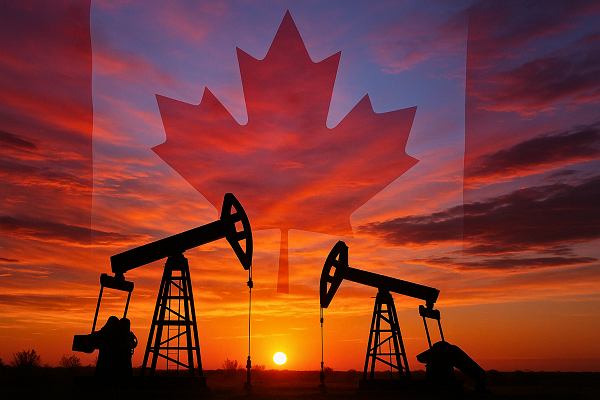
 Energy15 hours ago
Energy15 hours agoThis Canada Day, Celebrate Energy Renewal
-
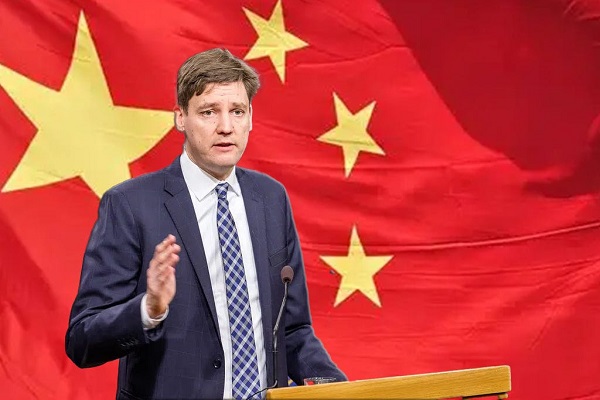
 Business1 day ago
Business1 day agoWhile China Hacks Canada, B.C. Sends Them a Billion-Dollar Ship Building Contract
-
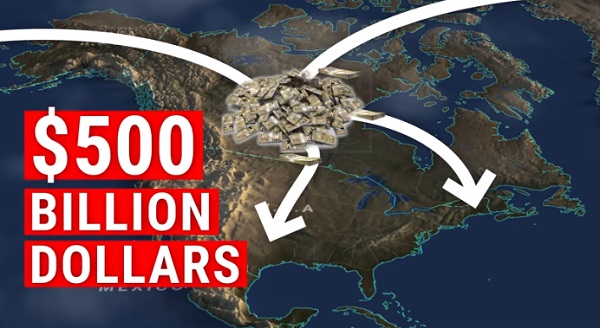
 Alberta1 day ago
Alberta1 day agoSo Alberta, what’s next?
-
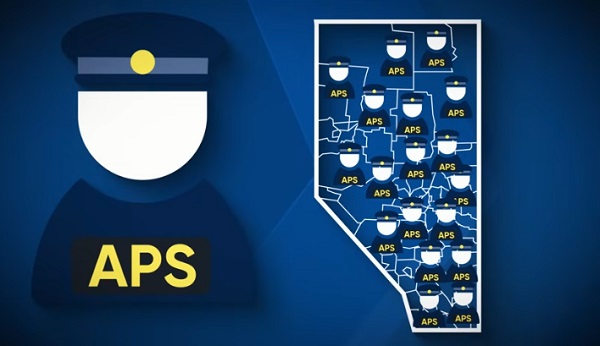
 Alberta6 hours ago
Alberta6 hours agoAlberta Next Takes A Look At Alberta Provincial Police Force
-

 Bjorn Lomborg1 day ago
Bjorn Lomborg1 day agoThe Physics Behind The Spanish Blackout
-

 Alberta8 hours ago
Alberta8 hours agoCanadian Oil Sands Production Expected to Reach All-time Highs this Year Despite Lower Oil Prices
-
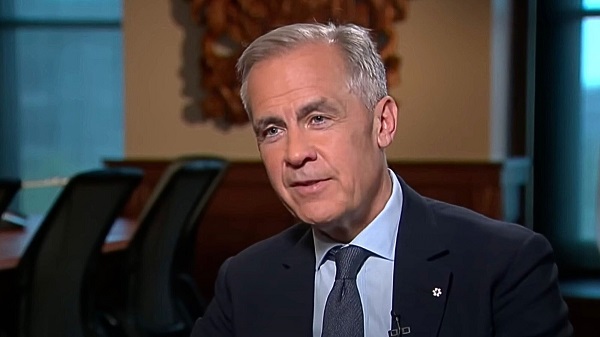
 Business10 hours ago
Business10 hours agoPotential For Abuse Embedded In Bill C-5






